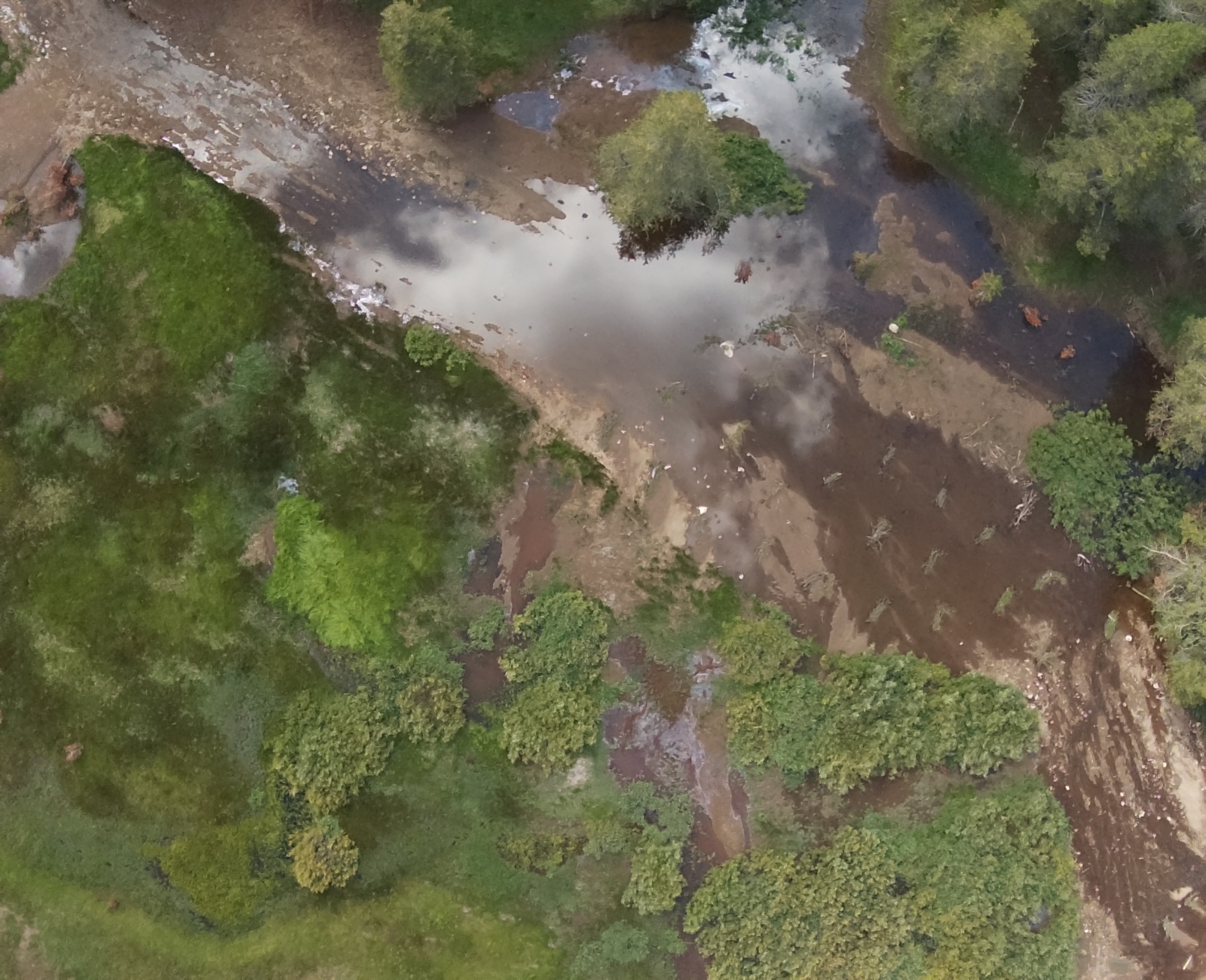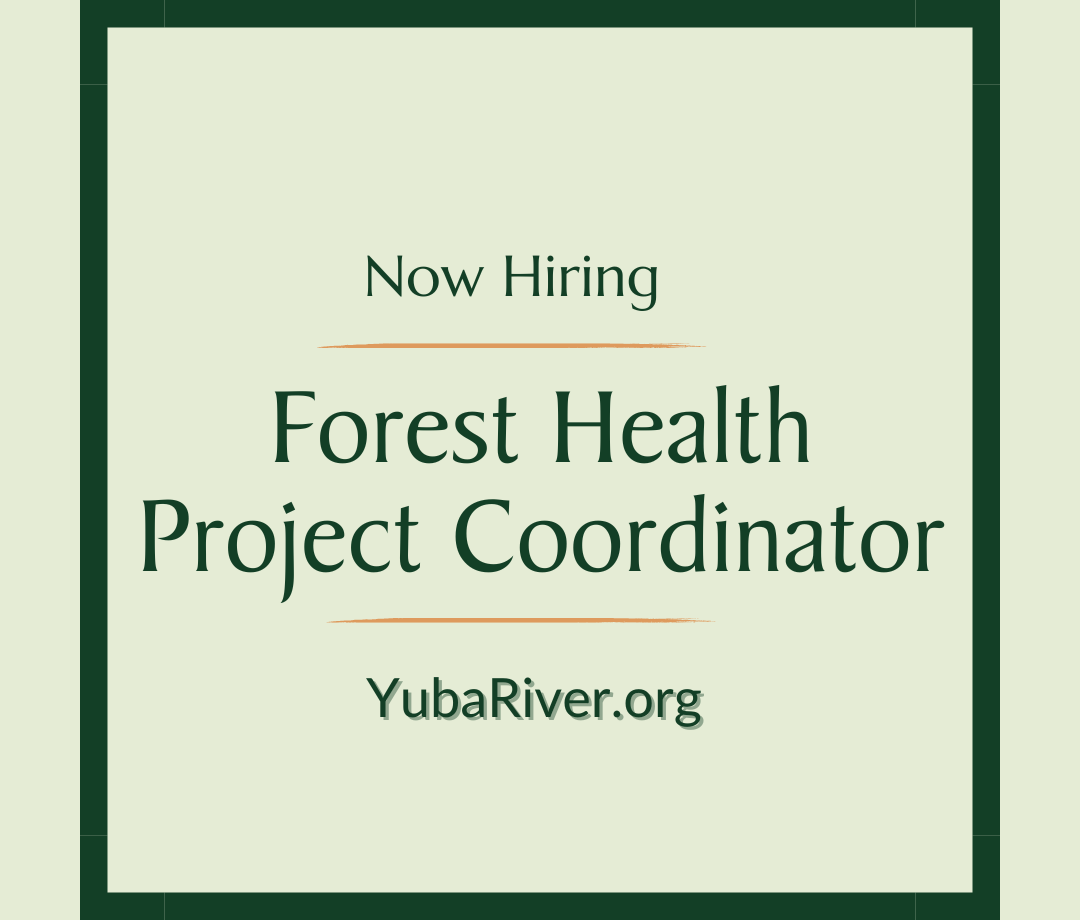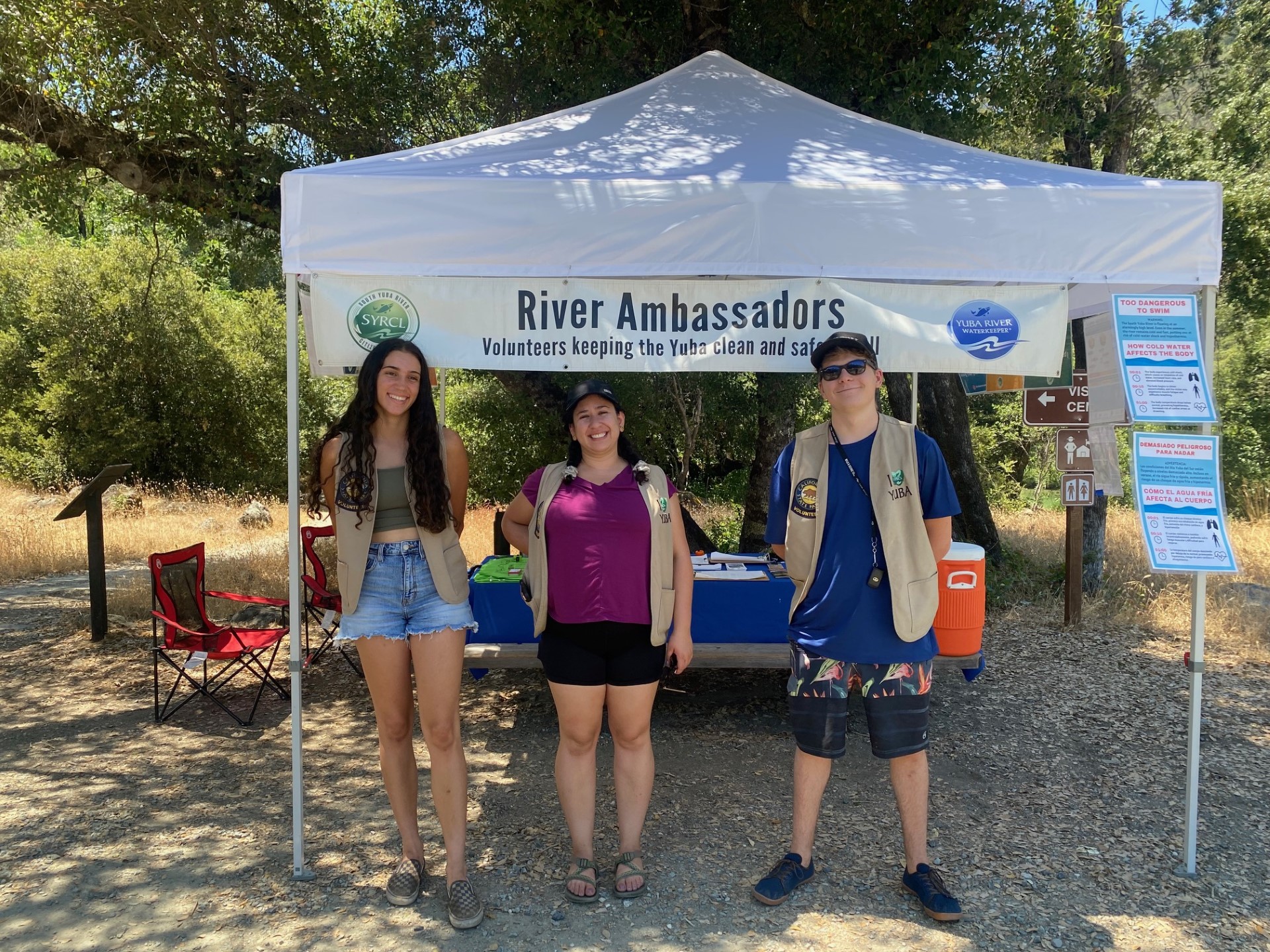Hallwood Side Channel and Floodplain Restoration Project Enters Phase Four

The Hallwood Side Channel and Floodplain Restoration Project is designed to enhance the lower Yuba River ecosystem by increasing available juvenile salmon habitat to improve the natural production of Chinook salmon and Central Valley steelhead. The project will also reduce flood risk through lower water surface elevations and velocities during flood events.
Hallwood Project Partners
This project is a collaborative effort between SYRCL, Cramer Fish Sciences, Teichert and Western Aggregates. Primary funders include: U.S. Fish and Wildlife Service (USFWS) and Yuba Water Agency. The Project Lead is cbec eco engineering.
Project Location
The project area is along the north bank of the lower Yuba River, downstream of the Daguerre Point Dam.
Background
In the project area, the Yuba River is constrained by tall linear cobble embankments called training walls, which were constructed in the early 1900s by hydraulic dredges following the Gold Rush. These training walls are within the highly modified Yuba Goldfields setting where hundreds of millions of cubic yards of hydraulic mining sediment was deposited in the lower Yuba River through the early 1900s. The area was subsequently dredged multiple times, creating significant impacts for the natural flow of the river and the floodplain. A large training wall in the middle of the river, known as the Middle Training Wall, runs more than 2 miles along the length of the project.
The Project Plan
The project design is based on the premise that restoration of natural river and floodplain processes, including the removal of large portions of the Middle Training Wall, will create a healthier, more natural, and therefore, more productive river. Improvements will enhance up to 157 acres of seasonally inundated riparian floodplain, approximately 1.7 miles of perennial side channels, and approximately 6.1 miles of seasonally inundated side channels, alcoves, and swales. Enhancements will be made through land surface changes, riparian planting, and placement of large woody material embedded to simulate a more natural river at key locations. The total project cost is estimated to be $6 million. Funding has been provided by USFWS grants and Yuba Water Agency.
Phase 1 was implemented in 2019–2020 and created an enhanced 89 acres of historic floodplain habitat, 1.7 miles of perennial channels, and 3.7 miles of seasonal channels. Over the course of 2021, biological monitors observed the channel and floodplain habitats functioning as designed, supporting growth of the installed riparian plants, and recruiting native plants to colonize the project footprint. Additionally, juvenile Chinook salmon, juvenile rainbow trout/steelhead, Sacramento suckers, riffle sculpin, and Pacific lamprey were all documented enjoying the recently restored side channels.
In November 2021, Phase 2 of the project was completed with approximately 800,000 cubic yards of rock having been removed from the Middle Training Wall. This phase restored an additional 34 acres of historic floodplain habitat and 1.6 miles of perennial side channels for the benefit of Chinook salmon, steelhead, lamprey, sturgeon, and a diversity of other terrestrial and aquatic wildlife. Where the Middle Training Wall once stood, a side channel now meanders through the floodplain amidst planted willows, cottonwoods, and other riparian species. Additionally, 24 strategically placed Large Woody Structures grace the floodplain and side channel area providing rearing habitats and refugia for juvenile fish at a variety of flows.

Looking upstream at Hallwood Phase 2 work area, pre-project 2021 (left) and post-project in February 2023 (right).
Phase 4 construction on the Hallwood Side Channel and Floodplain Restoration Project began in June 2023. During this phase, we are removing the final portion of the middle training wall, complete finish grading of Phase 3 and 4 floodplains and tertiary channels, plant additional trees, and place large woody material to increase juvenile salmon habitat complexity. Construction is expected to be completed by late November 2023.
A temporary bridge has been installed across the north channel of the Yuba River at the Teichert-Hallwood plant for access to the work area. This will be in place from June 30 – November 30, 2023. For more information call Yuba Water Agency (530) 741-5000 or Yuba County Sheriff Marine Patrol (530) 749-7777.
In 2022, approximately 760,000 cubic yards of material was removed from the middle training wall in the Phase 3 footprint to achieve an interim grade which will be finished in 2023. A total of 32 large woody material structures were also installed within the Phase 1 footprint (Middle Training Wall, point bar, and the upper end of the perennial channel).
Juvenile Chinook Salmon and O. mykiss were documented rearing in the perennial side channel and alcoves during spring 2021 and 2022 (low flow drought years) and in inundated floodplains and alcoves in 2023 (a high flow wet year) during snorkel and seining surveys. During 2023, extended salmonid rearing was documented into at least mid-June in the Hallwood site, whereas juvenile salmonids were absent by mid-May at an unrestored control site. A juvenile Chinook Salmon PIT tag mark-recapture study documented habitat use and growth of individual fish in the Hallwood floodplain and alcoves.
Preliminary data from 2021 suggest that drift invertebrate prey densities increased in the Hallwood side channel after restoration, and juvenile salmonid stomach fullness increased and percentage of empty stomachs decreased following restoration. Non-native fish communities that prey upon and compete with juvenile salmonids were almost completely eliminated following restoration. Natural riparian tree recruitment was documented across all habitat types (floodplain, side channel margins, alcove), including cottonwood, several willow species, alder, Oregon ash, sycamore, button willow, and coyote bush.

Phase 3 interim condition middle training wall removed after 2022 rough grading. Fine grading will be completed in 2023.

Looking upstream over north channel and floodplain and alcoves completed in Phase 1 (2020).
Photos taken by cbec eco engineering. GoPro video taken by Cramer Fish Sciences.
Did you enjoy this post?
Get new SYRCL articles delivered to your inbox by subscribing to our ENews.




